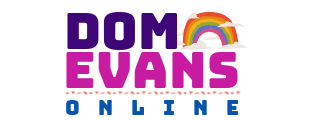BY: INGRID TISCHER
It is with great honor that I present to you an article, written by a dear friend of mine in the disability community, NMD (neuromuscular disease) community, and a fellow disability rights activist. Her thoughts on this, and many other topics, so often mirror my own.
Every family has its stories. In my family, many of them end with The Debunking of the Experts. A classic one is about the first specialist the pediatrician referred my parents to when I wasn’t crawling. “She will never walk!” he is said to have declared. Say what you will about fearing the unknown; my parents were buffeted around by so much medical certainty, it’s amazing they didn’t develop whiplash.
Long story short, I did walk, and I went to school, even though a misdiagnosis required my parents to find proof I was educable. Later, I defied other odds and went to work. My family never expected anything else. That was fortunate, because if I lacked stereotypes that hold many girls and women with disabilities back, I also lacked role models.
No one else in my family is visibly disabled and I was mainstreamed after a “special” pre-school/kindergarten. I have almost always been the only “out” disabled person in my workplace. Once I tried to downplay the disability but now I question why I’m so often the one “special needs” employee: the woman with muscular dystrophy.
Last Labor Day was the 40th Jerry Lewis Telethon for Muscular Dystrophy. It was tough to watch mostly because of the cognitive dissonance of seeing people who are ostensibly like myself, yet not. Not because they’re more disabled but because they’re portrayed as wretched/heroic. So not me.
I’ve contacted friends and colleagues for the past two years, asking them to send emails of protest to the Muscular Dystrophy Association (MDA). I do it because I’m employed and too few women with disabilities are, a situation caused in part by the stereotypes the Telethon perpetuates.
Barbara Ehrenreich complained, quite rightly, about the infantilizing treatment she received after being diagnosed with breast cancer. MDA may think it has sidestepped that issue by using actual children in the Telethon. It’s hard to complain that Lewis is treating kids like children. But I’m pretty sure no one ever told Ehrenreich that she was half of a person because she had breast cancer. That’s what Lewis said on CBS Morning Show in 1999: Having muscular dystrophy makes you “half a person.”
Whenever I think about that, I want to say to Ehrenreich, “I’ll trade you the pink-ribbon teddy bear for Jerry Lewis any day.”
Minutes after I tuned in this year, a little girl was profiled in a video montage before she and her parents joined the host on stage. She sat listening quietly as her parents talked about how their little girl didn’t have a future.
Unlike “normal” children, she was “confined” to a wheelchair and could be “struck down” at any moment. You couldn’t see how these dramatic statements affected her because a “Call Now” graphic covered the lower portion of the screen — right where her face was, and where the face of any person who uses a wheelchair would be expected to be.
Here’s the thing: Little girls who hear they don’t have futures become women who don’t have jobs. And people will never care that women with disabilities are excluded from their work places if they think of us as faceless bodies with special needs instead of women with equal rights.
Ironically, the MDA Telethon is held annually over the Labor Day weekend, yet is presided over by Jerry Lewis who declared on air, “My kids cannot go into the workplace.” In an interview on CBS Sunday Morning, Lewis was not apologetic about using stereotypes, or his contempt for people with muscular dystrophy who object to being demeaned in this way: “If it’s pity, we’ll get some money. Pity? You don’t want to be pitied because you’re a cripple in a wheelchair? Stay in your house!”
Lewis’ use of the word “kids” as in “kids in the workplace” and “Jerry’s kids” show how persistent — and unquestioned — stereotypes often are. We know Lewis isn’t saying kids should work. He meant “adults.” Who he feels entitled to refer to as children, which is excused because he “means well.” Many women couldn’t care less that a man can “mean well” when he calls a woman a “girl.” Or “sweetie.”
If I don’t put up with sexist behavior in order to get a paycheck, why would I excuse another kind of discrimination because it’s connected to a donation? I can’t imagine Equal Rights Advocates, where I work, promoting a spokesman at our annual luncheon who said, “My girls cannot go into the workplace.”
According to the Center for Research on Women With Disabilities at Baylor College of Medicine, 26 percent of women with disabilities live below the poverty line, as compared with 10 percent of women without disabilities; and 31 percent of women with disabilities are employed full-time, as compared with 69 percent of those without disabilities.
These numbers show the effects of the stereotyping and discrimination to which women with disabilities have been subjected for too long. That brings us back to the “question” about girls with disabilities and their futures. Are those futures going to be better than these grim numbers predict they will be?
Ingrid Tischer
This was originally published in November 2005 in the Bay Area Business Women’s News.


Comments